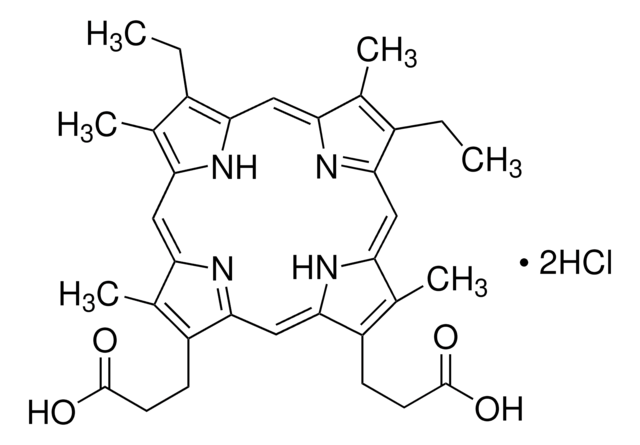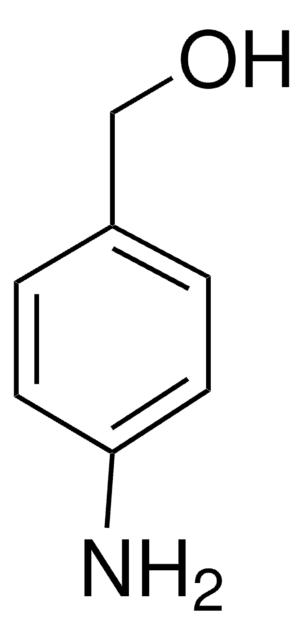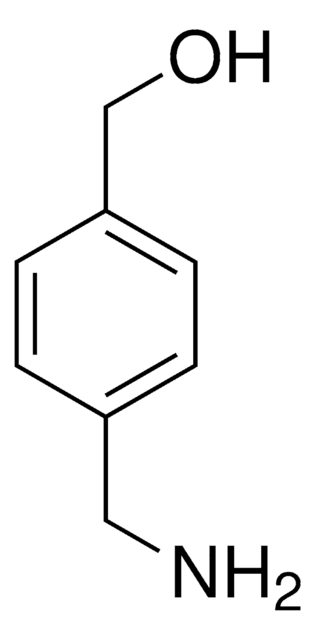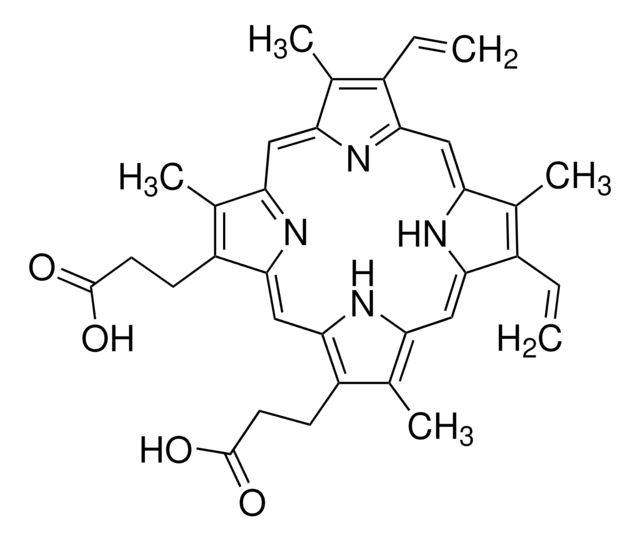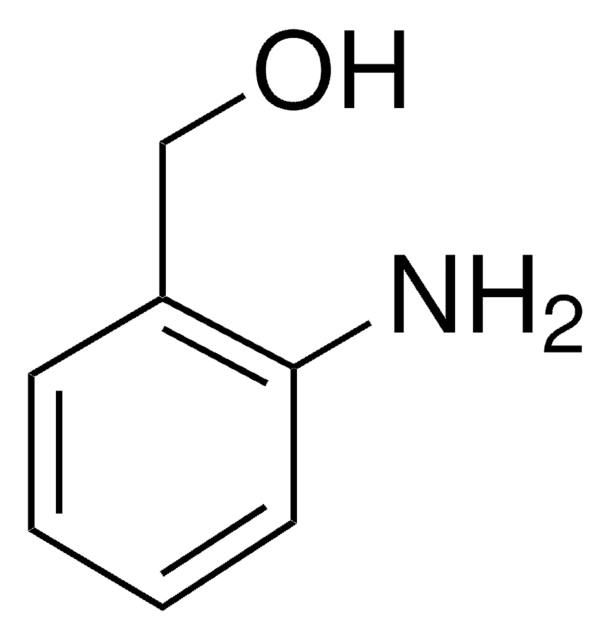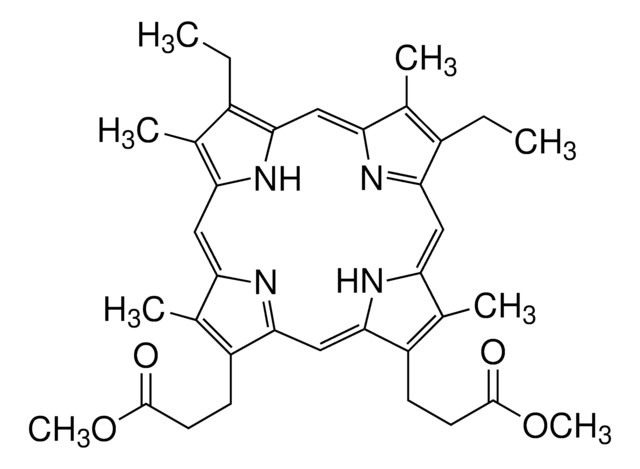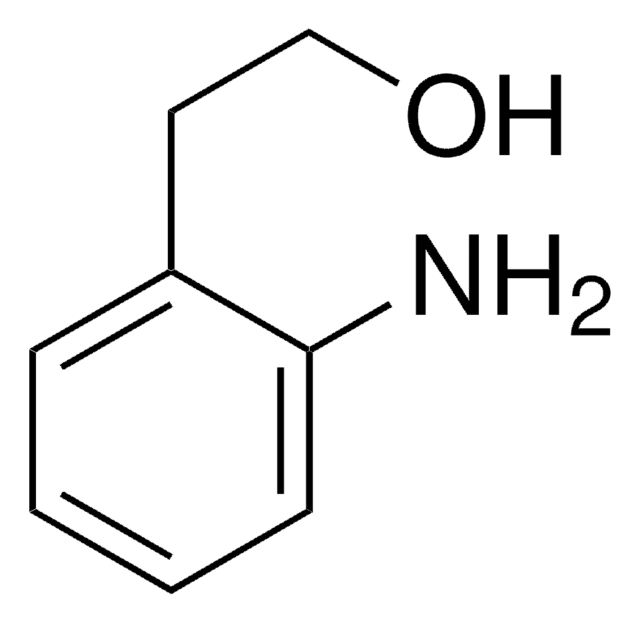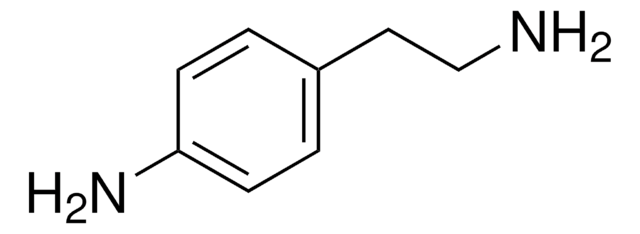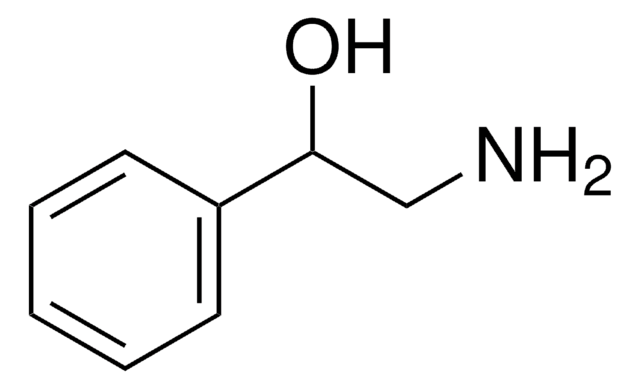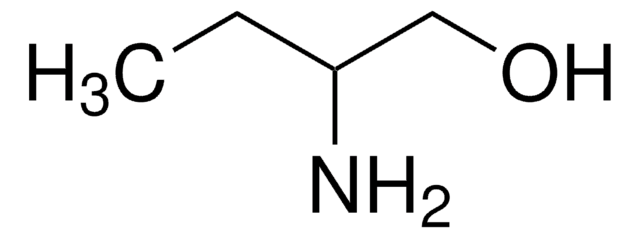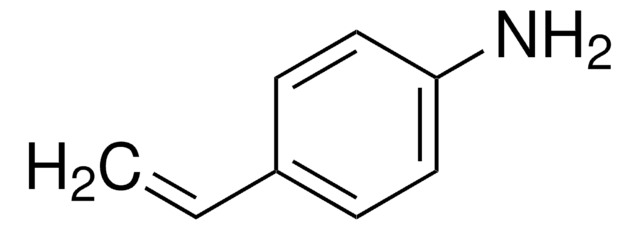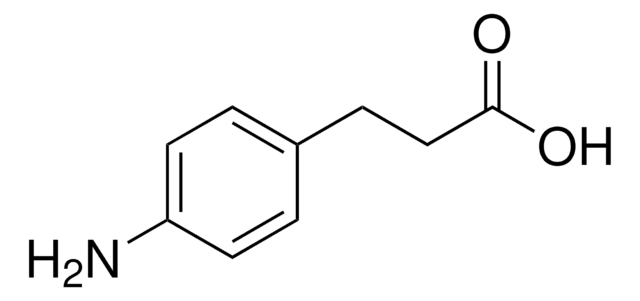261645
4-Aminophenethyl alcohol
98%
Synonym(s):
2-(4-Aminophenyl)ethanol
Sign Into View Organizational & Contract Pricing
All Photos(1)
About This Item
Linear Formula:
H2NC6H4CH2CH2OH
CAS Number:
Molecular Weight:
137.18
Beilstein:
907205
EC Number:
MDL number:
UNSPSC Code:
12352100
PubChem Substance ID:
NACRES:
NA.22
Recommended Products
Quality Level
Assay
98%
mp
107-110 °C (lit.)
functional group
hydroxyl
SMILES string
Nc1ccc(CCO)cc1
InChI
1S/C8H11NO/c9-8-3-1-7(2-4-8)5-6-10/h1-4,10H,5-6,9H2
InChI key
QXHDYMUPPXAMPQ-UHFFFAOYSA-N
Looking for similar products? Visit Product Comparison Guide
Related Categories
Application
4-Aminophenethyl alcohol has been used:
- as nonsymmetric monomer in the preparation of ordered [head-to-head (H-H) or tail-to-tail (T-T)] poly(amide-ester)
- in the synthesis of 4-aminostyrene
- in functionalization of graphene nanoplatelets
Signal Word
Warning
Hazard Statements
Precautionary Statements
Hazard Classifications
Eye Irrit. 2 - Skin Irrit. 2 - STOT SE 3
Target Organs
Respiratory system
Storage Class Code
11 - Combustible Solids
WGK
WGK 3
Flash Point(F)
Not applicable
Flash Point(C)
Not applicable
Personal Protective Equipment
dust mask type N95 (US), Eyeshields, Gloves
Choose from one of the most recent versions:
Already Own This Product?
Find documentation for the products that you have recently purchased in the Document Library.
Customers Also Viewed
Functionalized graphene nanoplatelets for enhanced mechanical and thermal properties of polyurethane nanocomposites.
Yadav SK and Cho JW.
Applied Surface Science, 266, 360-367 (2013)
Synthesis and polymerization of N-(4-vinylphenyl) maleimide.
Hagiwara T, et al.
Macromolecules, 24(26), 6856-6858 (1991)
Constitutional isomerism IV. Synthesis and characterization of poly (amide-ester) s from isophthaloyl chloride and 4-aminophenethyl alcohol.
Li L, et al.
Polymer Journal, 33(4), 364-370 (2001)
Mariusz Sandomierski et al.
Scientific reports, 10(1), 19289-19289 (2020-11-08)
Commonly used endoprostheses in the orthopedic industry are those made of Ti6Al4V titanium alloy. Unfortunately, this material has low abrasion resistance, and therefore methods of their modification are still sought. A sensible approach is coating the alloy with a layer
Our team of scientists has experience in all areas of research including Life Science, Material Science, Chemical Synthesis, Chromatography, Analytical and many others.
Contact Technical Service